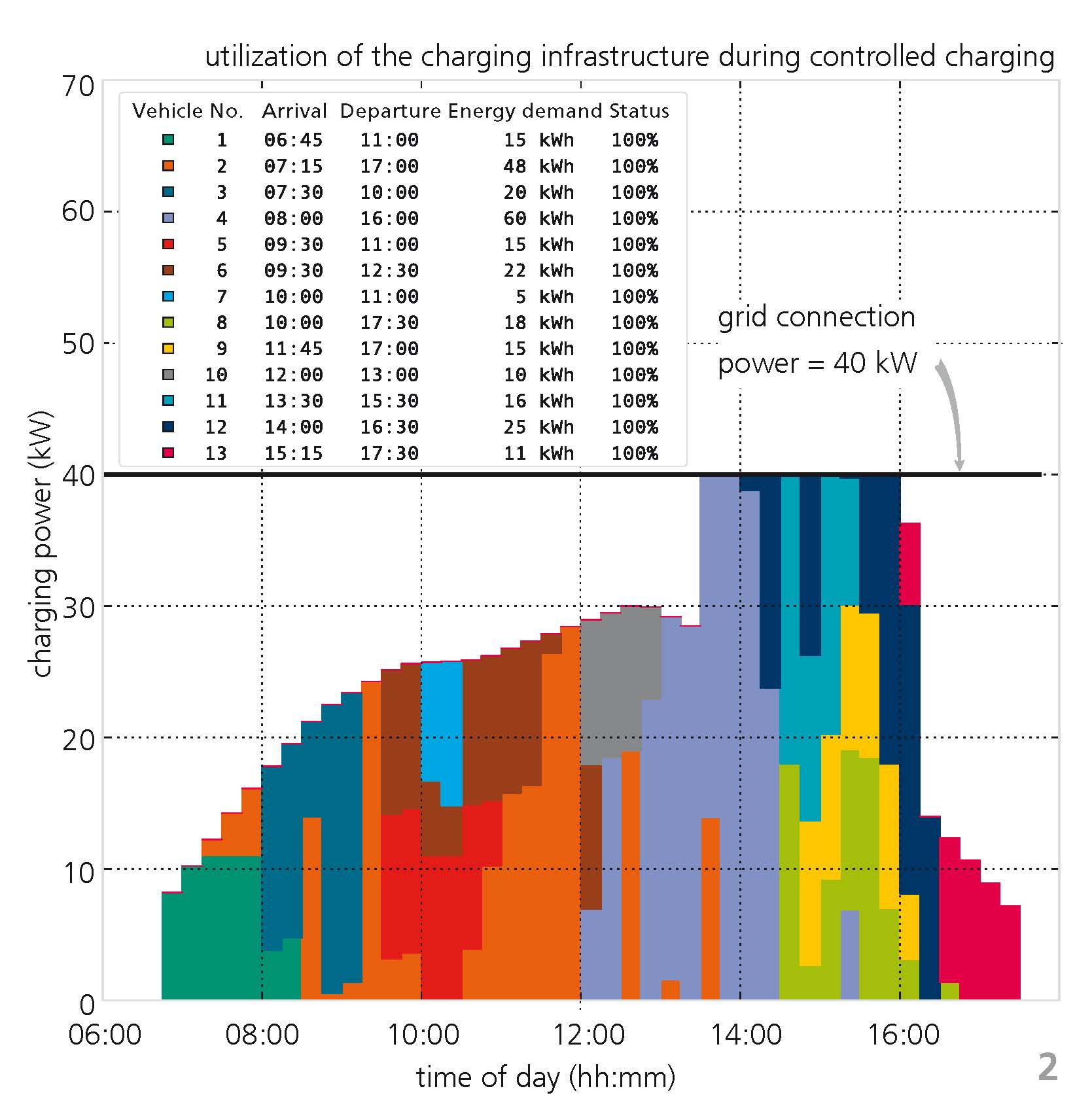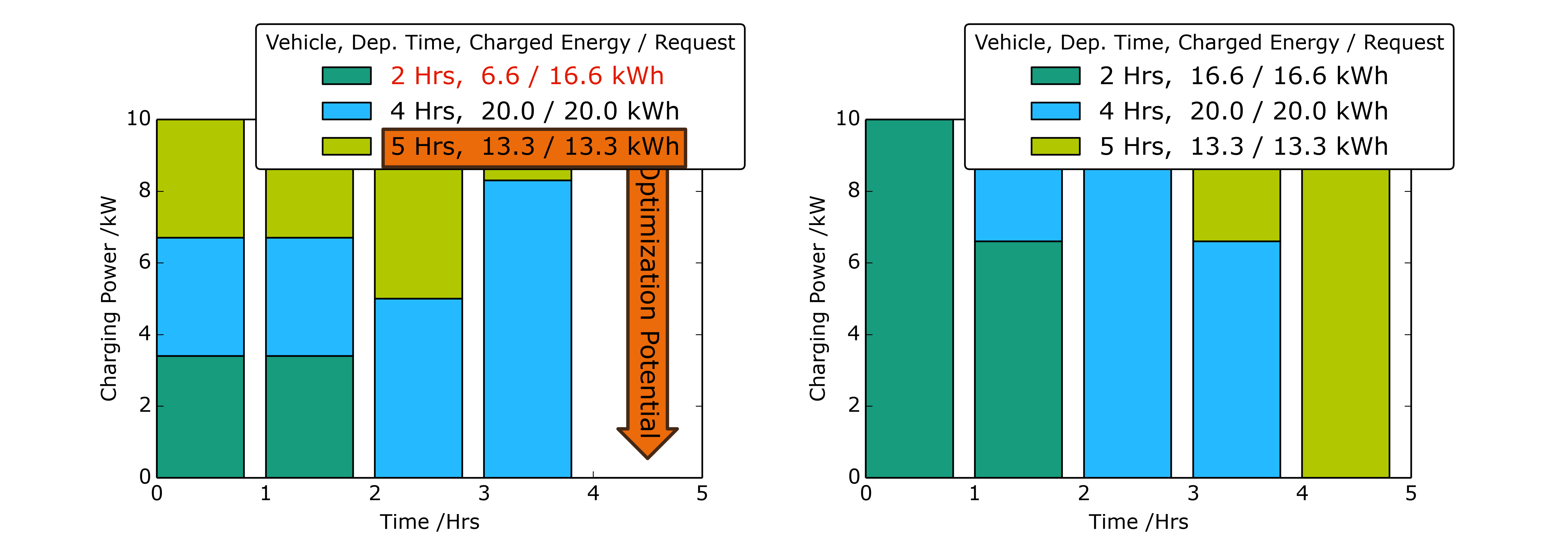| Duration: | October 2012 - December 2014 |
| Contracting Authority/ Sponsors: | German Federal Ministry for the Environment, Nature Conservation and Nuclear Safety (BMU) |
| Project Partners: | BELECTRIC Solarkraftwerke GmbH, BELECTRIC Drive GmbH, E-Werk Mainbernheim, KISTERS AG, Hochschule Zittau-Görlitz, Lemonge Software GmbH |
| Website: | www.intellan.de |
Intellan – Intelligent Charging Infrastructure with Grid Integration
Charging Management for Charging Clusters Combined with Smart Home EMSs


The range of battery electric vehicles is growing and, with high rates of utilization and journeys that are typically easy to plan, deploying them in vehicle fleets is becoming increasingly profitable. For various reasons, operating electric vehicle fleets calls for intelligent charging management solutions. Current charging infrastructures, however, usually take the form of individual “electricity stations”, preventing electric vehicles from being intelligently integrated into the grid. The INTELLAN project’s main aim is to incorporate charging infrastructures into the different regulatory mechanisms of today’s power grids and future smart grids.
As part of the INTELLAN project, Fraunhofer ISE is developing forecast-based algorithms that optimize electric vehicle charging at charging clusters supplied by photovoltaic installations. These algorithms determine the potential for charging individual vehicles at later points in time and provide customized charging timetables. This addresses current issues related to operating fleets of electric vehicles:
- Charging vehicles in one place heavily burdens the load capacity of the grid connection: essentially, steps must be taken to ensure that the grid can provide the maximum amount of electricity required by all vehicle connection points.
- If charging processes are not coordinated, the number of installed charging points may not exceed the load capacity of the grid. This makes it almost impossible to equip individual stations with an adequate number of charging points.
- High levels of inefficiency are often the result of discrimination-free charging (without intelligent management), as vehicles must be charged on a first-come, first-served basis, regardless of whether charging is possible at a later point in time. An example of this is shown in the image to the left.
Relevant conditions, such as energy requirements, vehicle parking time and maximum output at the grid connection point, are identified to take advantage of the potential for charging electric vehicles at later points in time. Fraunhofer ISE’s optimization software uses this information to create personalized timetables that provide a framework for individual vehicle charging. An example of this is shown in the image to the right, where the energy requirements of each vehicle are fulfilled within the relevant parking time without exceeding the maximum grid connection capacity of 10 kW (assumed for the sake of this example).
The capacity limitations of the vehicles and all other parts of the charging infrastructure are also taken into account. Additionally, the software is able to incorporate and simultaneously process capacity-related electricity costs, times of the day that see an increase in demand as well as charging that prioritizes electricity from renewable sources, making it more economical for operators to use the charging infrastructure.
Furthermore, research is looking at ways of combining intelligent charging clusters with the energy management systems (EMS) used in smart homes and commercial systems. Here existing EMS solutions shall be used in order to minimize integration costs. Equipping the systems involved with a communication interface (that is as generic as possible) should give them additional functionality without requiring them to master the complexity of the other systems. In order to achieve the most generic communication interface possible, an additional functionality for the participating systems shall be included, without having to master the complexity of the other systems. An energy management gateway shall function as mediator between the systems.
These concepts were implemented in a demonstration system at “Innopark” in Kitzingen. The existing building management system was connected to the newly installed charging cluster via an energy management gateway. The gateway uses key state and control variables to identify and influence the system behavior. Our expertise in self-learning systems and in prognosis-based operating systems flows into concepts for the interplay between the building services management and the operating algorithm of the charging cluster. Forecasts of PV generation and load in the energy management gateway ensure that the load operation is carried out primarily with surplus PV energy, allowing output capacities to extend across all systems.
Study on intelligent charging in private households
As part of the INTELLAN project, a study was carried out to determine the potential of intelligent EV charging by means of self-produced photovoltaic electricity in a private household. The economic development of electric mobility coupled with renewable electricity production was estimated.